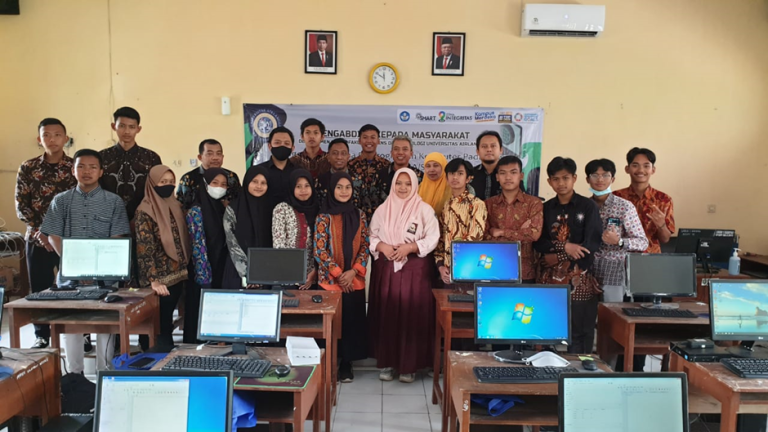
Angga Dito Fauzi
Physics learning must be enjoyable to attract students’ interest. The well-known term for this type of learning is ‘Physics is fun.’ Currently, such teaching methods in high schools are highly needed. This is because students’ interest and enthusiasm towards physics lessons are relatively low compared to other sciences. High school students perceive physics negatively as it is deemed difficult, formulaic, theoretical, abstract, and less applicable to daily life.
Physics education emphasizes cognitive mastery over psychomotor skills and creative technological development, resulting in less student interest. They fail to comprehend that physics serves as the foundation for the development of nearly all technologies and perceive it as not offering promising job prospects.
Currently, the trend of students entering physics programs is diminishing. This phenomenon is not only occurring in Indonesia but also in America and Europe. The difficulty level of entering physics programs at state universities (PTN) in Indonesia is lower compared to related STEM programs or other fields. The preference rate as the primary choice is very low, and the favorite programs across all Indonesian PTNs are those related to medicine, such as medicine, dentistry, pharmacy, midwifery, and nursing.
Various efforts, particularly by physics programs at universities, have been made to increase interest, such as regular community service activities, physics Olympiads at district, provincial, national, and even international levels. However, nearly 95% of medalists at various national and international levels do not choose physics programs.
At the high school level, physics lessons are also perceived as difficult, dry, boring, and uninteresting, resulting in low motivation for students to learn physics. This issue poses a significant challenge for physics teachers. They must consider how to teach physics in a more enjoyable manner and make it relevant to students’ lives. In this endeavor, teaching strategies that challenge students with real, contextual, and less rigidly structured problems can help them actively learn and enjoy physics. However, the main problem in achieving this type of learning is the lack of teacher knowledge regarding various applications of physics in real life and modern technology, particularly in the field of medical materials.
Many medical phenomena are more easily understood using physics concepts. Poiseuille’s Law, for instance, facilitates understanding the relationship between stroke, blood pressure, and heart function. Newton’s First Law or the law of inertia easily explains why obesity leads to a lack of physical activity, the use of infrared radiation for breast cancer prevention through thermography, and the use of elementary radiation particles for the diagnosis and therapy of cancer and other diseases.
In orthopedics, bone implants require composite materials with specific density values, elastic modulus, tensile strength, compressive strength, corrosion rate, and certain degradation capabilities. Additionally, specific pore size and porosity are required to support biocompatibility, osteoconductivity, and osteoinductivity. These properties can cause chemical and physical interactions between the implant and host bone tissue, known as bioactivity and bioresorption.
Similarly, in the dental filling process with dental cement, physics is used. Physics is also used in wound healing and dressing in dermatology due to the primary requirements of absorbance and elastic modulus, elongation and tensile strength, as well as impact strength. Therefore, the dissemination of knowledge about medical materials is urgent for physics teachers and their students to make physics lessons more appealing.
Universitas Airlangga, as one of the largest universities in Indonesia, has an obligation to continue advancing knowledge and technology to the community level. One of these efforts is carried out by the Faculty of Science and Technology at UNAIR, which actively plays a role in organizing educational programs that produce scientists in the medical field. Its mission is to contribute knowledge to efforts to improve the quality of education in the territory of the Unitary State of the Republic of Indonesia to enhance the nation’s competitiveness. The Department of Physics, as part of this faculty, plays a role through disseminating research results to the community.

